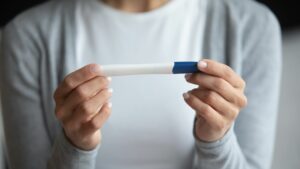IVF protocols have evolved over the almost 40 years of IVF history. We offer individualized Conventional IVF as well as Natural IVF and Mini Stim IVF. The overall IVF process is discussed here.
At a Glance
- The goal of the Conventional IVF process is produce as many eggs as possible
- Retrieval with Conventional IVF is performed under anesthesia; Natural and Mini Stim IVF commonly do not require anesthesia
- ICSI and assisted hatching are used when deemed necessary
IVF Process: The Steps
- Stimulation: Ovarian stimulation with drugs to produce multiple eggs, monitoring with blood tests and ultrasound test.
- Egg retrieval: An ultrasound-guided aspiration of the follicles containing the eggs is performed. Conventional IVF generally requires anesthesia, while Natural IVF and Mini Stim IVF do not. A small needle passes just beside the ultrasound probe into the follicles. The follicles are aspirated, and eggs are identified. Not every follicle yields an egg. Many of the follicles are somewhat immature and the eggs do not come out. After an egg retrieval there is discomfort, which can be treated with oral medication. The discomfort of the ovaries usually will improve every day. If the ovaries do not improve, it might be a sign of overstimulation and the patient should come to the office for observation. Uncommonly there can be bleeding from or infection of the ovaries.
- IVF procedure: The sperm is retrieved from the man by masturbation. Surgical procedures may be required in some cases or donor sperm may be used. The sperm and eggs are placed together in a dish or ICSI is performed if the sperm quality is suboptimal. In these cases, sperm is taken up into a tiny pipette and the tail is immobilized. The sperm is then directly injected into the egg with a specialized device called a micromanipulator. This sophisticated step has improved IVF success rates tremendously.
- Embryo development: The day after egg retrieval, fertilization or lack of fertilization is observed and reported. Embryos then develop over the next five to six days. Some of the embryos will stop developing. The strongest of these will develop into the 80 to 100-cell blastocyst stage.
- Preimplantation genetic diagnosis: If desired, at this point embryos can be biopsied, and a few cells can be removed for evaluation by a genetics laboratory.
- Embryo cryopreservation: Currently in 2020, studies show that the best implantation rates are obtained if embryos are frozen and replaced later.
- Assisted hatching: Initially described at the Reproductive Biology Associates of Atlanta laboratory in the 1990s, assisted hatching is now a commonly performed procedure. Around the egg and then around the embryo there is a microscopic shell surrounding it called the zona pellucida. The embryo must break out of this shell in order to implant in the uterus. In assisted hatching, we create a crack in the shell to help it “hatch.” This assists with implantation, resulting in higher pregnancy rates in some patients, but is not need needed in all.
- Embryo transfer procedure: In most cases, the patient is instructed to have a full bladder. This allows abdominal ultrasound to visualize the uterus through the “window” created by the bladder. The uterine lining can be visualized easily. Most commonly, a firm external catheter is introduced just up to the junction of the cervix and the uterine cavity itself. A small internal soft catheter is then introduced to the upper part of the endometrium under ultrasound visualization.
- The bubble: The embryo, in the meantime, has been drawn up into a tiny drop of fluid, followed by a bit of air. The syringe is then pressed with the embryo catheter in place. The fluid around the embryo is expelled. The catheter is withdrawn and inspected to be sure the embryo did not stick to the catheter. In the meantime, typically one can observe the small flare or bright spot, which is caused by the bubble around the embryo-containing fluid.
Ovarian stimulation for IVF
Ovarian stimulation involves either oral or injectable ovarian stimulation drugs. According to the ovarian reserve of a patient, a drug regimen is tailored to give the ideal results. In the Conventional IVF process, the injectable gonadotropin drugs are used to stimulate the ovaries with daily injections after the patient has thorough instructions on the proper dosage. The patient injects herself or her partner administers the injections in the skin of the abdomen.
Oral medication may be used instead of injectable in a minimal stimulation IVF treatment cycle. After several days of this treatment, ultrasound observation and blood testing measure the responsiveness of the ovaries. Agonist or antagonists are used to prevent premature ovulation.
Typically, at least one more observation is necessary to determine that the follicles are ideally developed before the trigger drug, human chorionic gonadotropin (hCG), is administered. This medication has the peculiar distinction of being derived from human placenta, and acts like the hormone LH which is usually present only at mid cycle, stimulating the final development of the follicles and maturing the eggs. For patients on an antagonist regimen, the trigger drug is Lupron and may be accompanied by a small dose of hCG.
Approximately 36 hours after the trigger injection, the eggs are mature and egg retrieval is performed by transvaginal aspiration under ultrasound guidance. The eggs are not always mature, and while each follicle contains an egg, it is not always retrieved.
To know more about the next steps, after IVF is completed, like how many embryos are transferred, for instance, click here.







